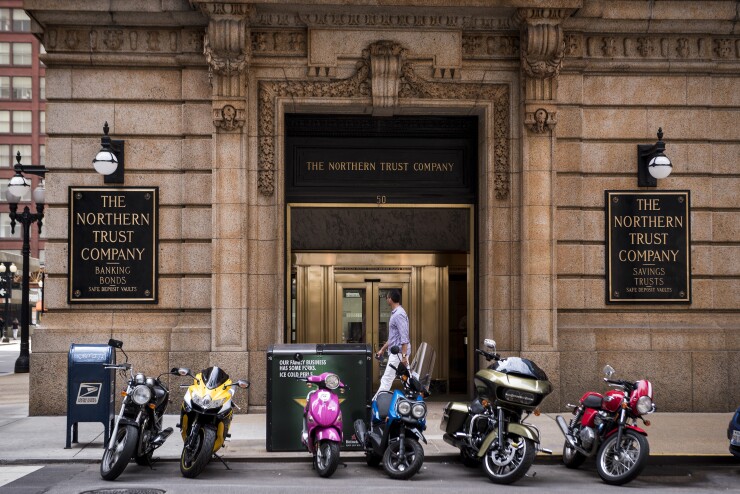Deposits have started to decline at Northern Trust, but executives aren’t sweating the outflow.
That’s because more than half of the deposits that left the Chicago trust bank during the second quarter — and about 85% of the deposits that have exited so far during the third quarter — are “nonoperational” in nature, Northern Trust executives said Wednesday during an earnings call.
The decrease isn’t a surprise given the Federal Reserve’s three interest rate hikes so far this year, with another one expected this month. When rates rise, some clients with nonoperational — or surplus — deposits start moving some of that cash into accounts that pay higher interest rates.
“That is the most rate-sensitive channel by far,” Northern Trust Chief Financial Officer Jason Tyler said about nonoperational deposits. “It’s also the fastest-declining category for us.”

Average deposits at Northern Trust fell 7% compared with the first quarter, with nonoperational deposits in particular decreasing by 11% during the same time period, Tyler said Wednesday. Nearly three weeks into the third quarter, deposits are down from the average in the second quarter, “but they seem to be leveling off” and stabilizing at around $120 billion, he said.
Given the fact that most banks have been inundated with deposits since the start of the pandemic more than two years ago, most of them aren’t too sorry to see some of that excess liquidity start to dissipate, as long as the outflows aren’t too severe.

Some pressure is starting to build when it comes to boosting interest rates, at least for commercial depositors. Banks may try to raise their own rates rather than lose those deposits.
“You’re starting to see material outflows at some banks,” Peter Serene, director of commercial banking at the consulting firm Curinos,
In terms of pressure, Trust banks like Northern Trust were
Northern Trust rivals State Street and Bank of New York Mellon also saw deposit outflows during the second quarter. State Street reported a 2% linked-quarter decline in average deposits, while Bank of New York Mellon said deposits fell by 1% from the first quarter.
For the second quarter, Northern Trust’s net income was $396.2 million, up 8% from the same quarter last year. Earnings per share were $1.86, 7 cents short of the average estimate of analysts polled by FactSet Research Systems.
The year-over-year uptick in part reflects the implementation earlier this year of accounting reclassifications of certain fees, the bank said.





